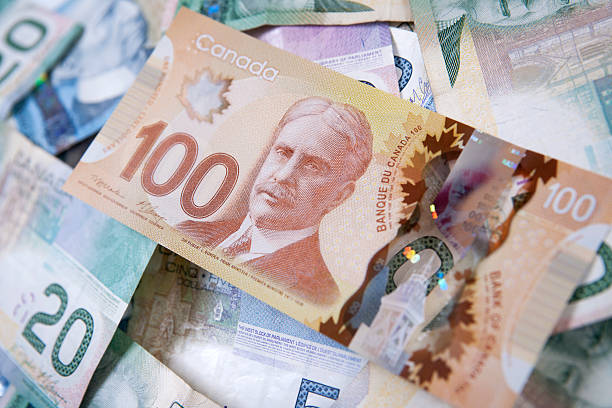Compared to all past Canada’s spending scandals combined, Ottawa’s recent $32 billion loss is the worst.
According to a recent Auditor’s General study, COVID payments worth a “minimum” of $27.4 billion may have been given to individuals who were either ineligible or actively abusing the system. More than $32 billion in COVID funds have been improperly spent after adding this to the $4.6 billion in documented government overpayments.
Given the enormous amount of government expenditure in recent years, it might not seem like much, but $32 billion is just a tenth of the $325 billion deficit that Canada amassed in 2020. However, if the Auditor General’s concerns are confirmed, this is the greatest theft of public monies in Canadian history. And since 1867, none of Canada’s major financial missteps, spending scandals, or blunders have even come close.
Here is a breakdown of how improbable it is for the Canadian government to lose $32 billion.
There is enough unaccounted for money to construct the Canadian Pacific Railroad 18 times over.
The decade preceding the building of the Canadian Pacific Railroad was unquestionably the most corrupt in Canadian history. The extent of corruption in the Canadian political system at the time, according to historian R.T. Naylor, “is genuinely remarkable even to the cynic.”
For instance, Sir John A. Macdonald’s political career was only briefly put on hold after he was exposed for openly exchanging sole-sourced railroad contracts for bribes. But even the most corrupt political elite in late 19th-century Canada couldn’t have imagined misappropriating $32 billion; the scale of the government just wasn’t sufficient. To put things in perspective, the finished Canadian Pacific Railroad cost (even with all the corruption) around $1.7 billion in 2022, or roughly one-eighth of $32 billion.
It would be sufficient to fund the whole Nova Scotian government for two years
Even while Nova Scotia isn’t a very large region, it nevertheless has a million residents, many colleges, a few hundred schools, innumerable hockey rinks, and hundreds of kilometres of roads that need to be maintained and kept snow-free. The entire amount spent by the provinces in 2019 was $15.5 billion, or nearly $41 million per day. Halifax could have a two-year tax break and still have $1 billion left over if we suddenly gave them $32 billion.
It is enough to cover a month’s worth of Canadian medical expenses
The Canadian Institute for Health Information estimates that in 2022, Canada spent $331 billion on health care, or roughly 10 percent of our GDP. Therefore, $32 billion would be enough to fund the whole healthcare system for 32 days and 20 hours. Every single doctor, nurse, flu vaccine, blood test, surgery, medivac, and ambulance transport throughout all 10 provinces and three territories, from the Tuktoyaktuk Health Centre to Toronto’s Mount Sinai Hospital, is covered for more than a month.
Enough for More than a year’s operations cost of the Canadian Armed Forces
Even though Canada is known for running its armed forces on a tight budget, maintaining a modern military is nevertheless expensive. Search and rescue missions, ship fleets, Arctic signal bases, and 68,000 workers in all. The total cost of all of this comes to $24.3 billion for the fiscal year 2021–2022. Therefore, the $32 billion in allegedly mishandled COVID funds could have supported every soldier for nearly 16 months by paying salaries, refuelling CF-18s, and reloading C7 rifles.
Equal to federal government losing majority of Loblaws
Loblaw Companies is the largest grocery retailer in Canada and one of the biggest distributors of groceries worldwide. All of these brands—as well as their house brands No Name, President’s Choice, and Joe Fresh—are owned by Loblaw. They include Superstore, No Frills, Shopper’s Drug Mart, Provigo, T&T Supermarket, and Freshmart. The market capitalisation of Loblaw Companies stood at $39.7 billion as per the most recent calculation. The federal government might lose $32 billion, which is approximately comparable to losing 81% of Loblaws.
It could construct the most atrocious blunder in Canadian history 12 times over
Montréal-Mirabel International Airport is nearly often listed first when historians compile lists of the greatest civil engineering blunders in Canadian history. Its whole footprint was almost equal to Montreal itself, and it was built in anticipation of the 1976 Summer Olympics in Montreal. At the time, it was North America’s largest airport. Despite predictions that it would accommodate 100 million people annually, it was never able to surpass three million, and now the partially abandoned Mirabel is mostly utilised as a cargo airport. And yet, the wasteful construction of one of the biggest airports in the world only resulted in a loss of $2.5 billion.
Even all of Alberta’s desired pipelines could be purchased with it
It’s no secret that Alberta’s ongoing effort to construct pipelines linking its oil deposits to tidewater has mostly failed. What would it matter if the federal government suddenly changed its mind and chose to build every pipeline Alberta has ever requested? In 2022 prices, it would cost around $8.5 billion to run Northern Gateway to Kitimat. Cost estimates for Energy East were $15.7 billion. We’re getting close to the $34.2 billion total even after factoring in the $10 billion cost of the recently abandoned Keystone XL project.





















































